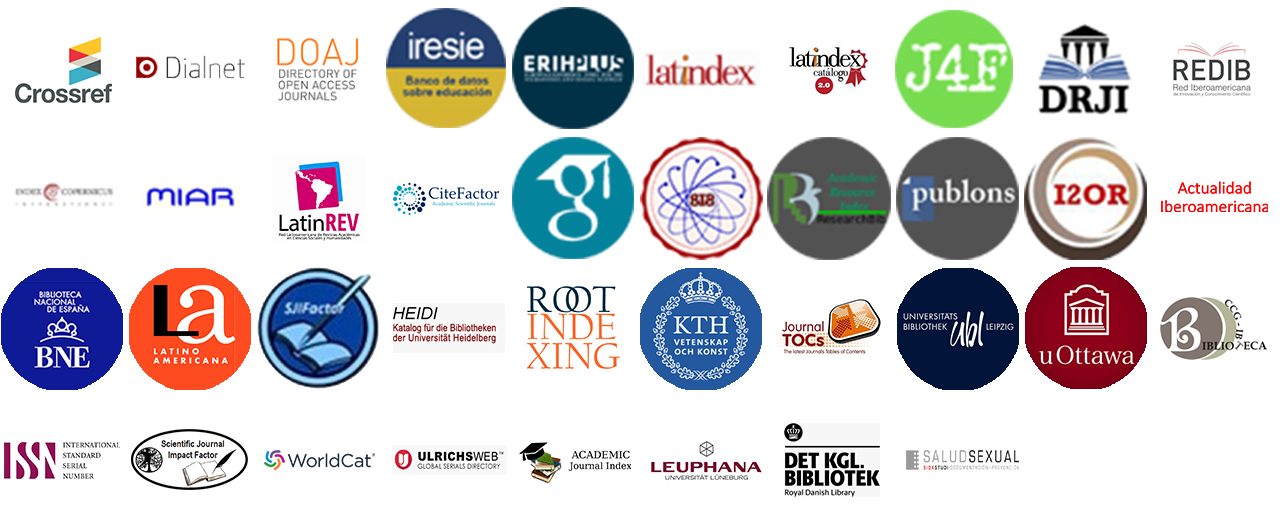THE IMPLEMENTATION OF VIRTUAL TUTORIES IN HIGH SCHOOL
DOI:
https://doi.org/10.36825/RITI.04.07.005Keywords:
Tutoring, Virtual Tutorial, High School, Virtual Learning PlatformsAbstract
Unlike developed countries, Mexico hardly reaches an indicator of 60% among the population aged 15 to 18 enrolled in secondary, high school or university, according to the Organization for Economic Cooperation and Development [1] in 2015. The age range mentioned is when the majority of students attend high school, which makes it a worrisome figure, which also answers the question, why do so few young people come to study a professional career? At the Universidad Autónoma de Sinaloa (UAS), an Institutional Tutoring Program was implemented in 2006, both at the upper level and at a higher level, although there are no references on the impact of this program on permanence, dropout, failure rates, terminal efficiency or acceptance and perception of this service by the students. This research aims to determine the acceptance of virtual tutoring (distance via the Internet) among high school students. For this research a sample of students was taken from Escuela Preparatoria Mazatlán of the UAS. The methodology used is quantitative - descriptive; an instrument (survey) was designed to collect data with open questions and Likert type, applied to 292 students in first, second and third grade of baccalaureate. Some important results are: the study subjects claim not to have time to receive personalized tutoring sessions, individual or group; high school students consider needing counseling; Most of the respondents perceive the tutor as an important academic support, which positively impacts their grades, but more than 50% do not feel in confidence with him. All of the study subjects would prefer to receive tutoring through the Internet.
References
OCDE (2016). PISA Estudiantes de Bajo Rendimiento. Por qué se quedan atrás y cómo ayudarles a tener éxito. Programa para la Evaluación Internacional de Alumnos. OCDE. 2016.
Sánchez Jiménez, A. (2015). El bachillerato, nivel escolar con las mayores tasas de deserción: expertos. La Jornada. Consultado : 8 de agosto de 2015. http://www.jornada.unam.mx/2015/05/07/opinion/041n3soc
SEP (2015). Dirección General de Planeación, Programación y Estadística Educativa de la Subsecretaría de Planeación, Evaluación y Coordinación. Consultado: 20 de diciembre de 2015. http://www.snie.sep.gob.mx/estadisticas_educativas.html
ANUIES (2000a). La Educación Superior en el Siglo XXI. Líneas estratégicas de desarrollo. Consultado: 8 agosto de 2015. http://planeacion.uaemex.mx/InfBasCon/LaEducacionSuperiorenelSigloXXI.pdf
ANUIES (2000b). Programas Institucionales de Tutoría. Una propuesta de la ANUIES para su organización y funcionamiento en las instituciones de educación superior. Consultado: 8 de agosto de 2015. http://www.uimqroo.edu.mx/Documentos/Tutorias/MANUALTUTORIAS-ANUIES.pdf
UAS (2015). Programa Institucional de Tutorías del Bachillerato de la Universidad Autónoma de Sinaloa. Consultado: 20 de enero de 2016. http://dgep.uas.edu.mx/programas2015/MATERIAL_DIRECTIVOS/PITUAS_UAS(2015).pdf.
Alvarado Vásquez, R. I. La Construcción de la Identidad de los Estudiantes de Bachillerato. UAS, 2011.
Downloads
Published
How to Cite
Issue
Section
License
Copyright (c) 2016 Revista de Investigación en Tecnologías de la Información

This work is licensed under a Creative Commons Attribution-NonCommercial 4.0 International License.
Esta revista proporciona un acceso abierto a su contenido, basado en el principio de que ofrecer al público un acceso libre a las investigaciones ayuda a un mayor intercambio global del conocimiento.
El texto publicado en la Revista de Investigación en Tecnologías de la Información (RITI) se distribuye bajo la licencia Creative Commons (CC BY-NC
 ), que permite a terceros utilizar lo publicado citando a los autores del trabajo y a RITI, pero sin hacer uso del material con propósitos comerciales.
), que permite a terceros utilizar lo publicado citando a los autores del trabajo y a RITI, pero sin hacer uso del material con propósitos comerciales.



